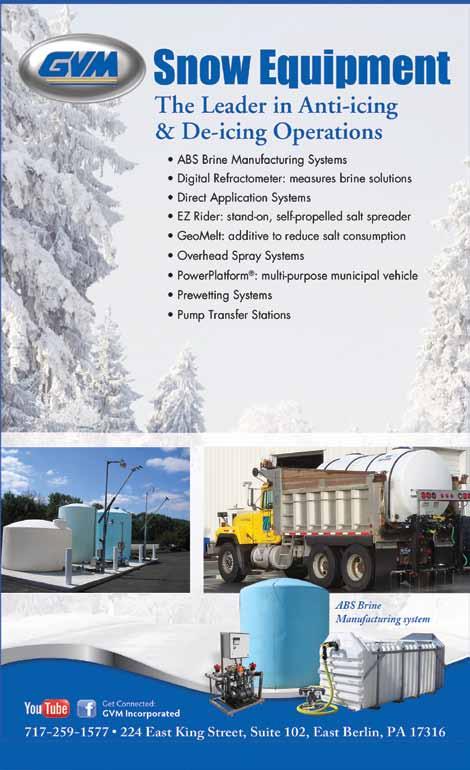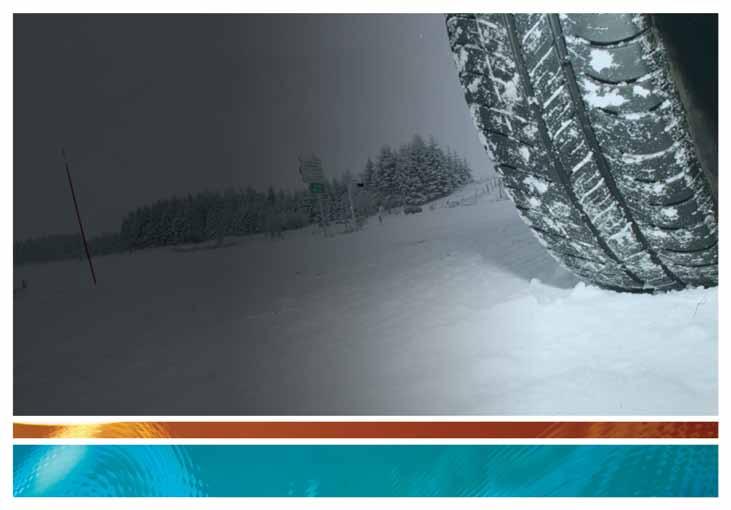
7 minute read
Are you ready for that major snowstorm?
Pat Kennedy, P.E.
Engineering Supervisor, Denver Public Works, Street Maintenance Denver, Colorado Member, APWA Winter Maintenance Subcommittee
Advertisement
now response is a service every agency subject to winter weather is accustomed to and usually capable of managing with little effort. Plans, equipment and personnel are prepared and ready to implement when the first flakes hit the air. Every few years, however, a weather event will strike that stretches the best plans to the breaking point. At times like those it becomes apparent who has anticipated these large-scale events and is ready to ramp up their response to the challenge. Public Works staff members in Denver, Colo., are not novices to snow response. Crews on average deploy 15-20 times a year to address an annual average of 60” of snow. Of the fifty largest cities in the United States, Denver and Cleveland are virtually tied on who is the snowiest. To be fair, many smaller cities in upstate New York or other northern states receive more, but they have much smaller population bases and smaller road networks. Planning for major winter events in a large metropolitan area is a challenge and should not be ignored.
Historically in Denver, major storm events (12” or greater in 24 hours) occur every few years and generally are early- or late-season events with moderate temperatures. Mid-winter heavy snows are very uncommon. A set of major storms during the holiday period at the end of 2006 and early 2007 showed the management of Denver that the plans for major storms were
insufficient to deal with major mid-winter events and sustained cold temperatures. Denver does not plow residential streets with typical events and we had neither the staff nor resources readily available to contend with three feet of snow that compacted into eight inches of ice on local streets.
Planning started in the summer of 2007 to build a revised major snow response program capable of providing the citizens with passable residential streets allowing for safe travel to arterial and collector streets where snow response is geared toward cleared streets and bare pavement. This program needed to be stand-alone; we could not afford to pull large plows off of arterials to clear local streets. Factors that went into the program design were:
• Network • Level of Service • Equipment • Staffing • Training • Trigger points • Public Education • Funding
The network was easy to determine—it is all public streets that are not plowed with the fleet of tandem plows. In Denver this is 1,400 centerline miles of residential and local streets.
A well-defined Level of Service is critical in the planning process. Public expectation and political expediency become as big a part in the design process as the street geometry and on-street parking. This LOS could range from one pass by a plow over a 24-hour period to a goal of bare pavement. Denver chose a middle ground, one pass each direction down the middle one-third of each street in a 12-hour shift. Bare pavement is not a goal, but rather an average accumulation of roughly 3”. This will keep rutting at a minimum, provide a safe travel zone, and minimize the snow berms that could block driveways and parked cars. APWA’s Awards Program recognizes individuals, groups and chapters for their outstanding contributions to the profession of public works. Some of the awards presented include Professional Manager of the Year Awards, Young Leader, Public Works Project of the Year, and Top Ten Public Works Leader of the Year, to name just a few.
Each award is listed on the APWA website. Criteria and nomination forms for the 2013 Awards Program are now available online.
Nominations are due March 4, 2013!
(Electronic nominations only.)
VISIT WWW.APWA.NET AND NOMINATE YOUR AWARD WINNERS TODAY!
Plowing residential streets is a slow process with other traffic, narrow confines, and adverse conditions. Because of the infrequency of deploying this operation the City decided to use vehicles that could be utilized for other standard City functions. Using standard pickups up to one ton size allows non-CDL drivers to be part of the staffing

pool. Another option considered was equipping trash trucks with plows, but the City did not want to take trash pickup out of service during a major event. The number of vehicles needed for the plan is based on an assignment of 25 lane miles per vehicle. Staffing for 108 light plows that comprise this program is built following the ICS model for chain of command. Five to six trucks are assigned to a sector, five sectors comprise a zone, and four zones cover the full network. No supervisor or superintendent is responsible for an unmanageable reporting structure. To provide an extra level of flexibility, 75% of the deployment utilizes City resources and the remaining 25% is contracted services who have access to heavier equipment if needed. The in-house staff is pulled from many different work groups and office staff, resulting in some closure of non-critical City functions during an event.
The drivers and supervisors may only be called into action once every couple of years so annual training is vital. The staff driving these plows are working far outside their usual workplace comfort zone when deployed. The training covers a wide gamut of topics: vehicle and plow operations, defensive driving, vehicle inspections and maintenance, radio communications, and public interaction. Live training with a plow on a closed course is mandatory every fall. Each driver is refreshed on the operation of a light-duty truck with a 1,000-pound blade on the front affecting sight and drivability.
Clearly-defined trigger points for deployment of this program are essential or it could morph into a standard procedure for other storm intensities. Any special operation such as this is expensive to deploy and results in many other services being placed on hold until staff can resume their normal duties. Specific objective criteria are used in Denver to determine when to deploy, and staff are told they are only required to perform these duties between November 15 and March 15. Storm forecasts must be for an event greater than 12” accumulation in a 24-hour period. Lastly, the forecasts must also include continuous below-freezing temperatures for several days after an event. It does not make financial
sense to deploy crews at a high cost if sunny and warm temps will melt the streets clear in a short period of time.
The public is accustomed to seeing the large plows for every snow event. A conscientious education effort is necessary to inform the public of all aspects of this major operation so there are no expectations that exceed the design and capabilities of the program. The major points to cover would be the trigger points and why they are set, and what the service will provide. Plowing the middle third of a street will invariably result in snow berms that must be navigated and shoveled by citizens to enable them to clear their driveways and parking stalls. The Denver program is not intended to clear streets curb to curb, but is only intended to provide a navigable path to major streets. There are many who will mistakenly expect the same level of service that they see on major streets. All forms of communication should be used: standard mass media, websites, and social media. Denver created flyers in partnership with a fast-food chain for distribution. The flyer included a coupon for their products.
It is difficult to create a line-item funding source for an infrequently used program. Most agencies will have contingency funds for extreme circumstances of any type. Using this vehicle for funding will get your program in motion and allow for the continuation of services while taking a less hurried approach to securing the funds.
The key to success during a major weather event that has the capacity to paralyze a city is to have a plan in place that has been designed in a thoughtful manner looking at the issue from all angles. In 2007 Denver was forced to plan on the fly and many streets were impassable for weeks. With the new plan in place, in February 2012 a storm dropped close to 20” of snow in 24 hours. Light plows were deployed at the start of the event and streets remained passable the entire time. Non-critical services within the city were off line for only one day while crews plowed on a Friday and Saturday. Every agency can look at their own resources, devise a plan, and maintain services to their constituency during a major weather event by following a process similar to the City of Denver.
Pat Kennedy can be reached at (303) 446-3535 or william.kennedy@ denvergov.org.












